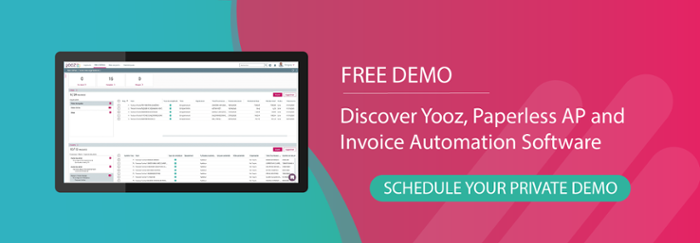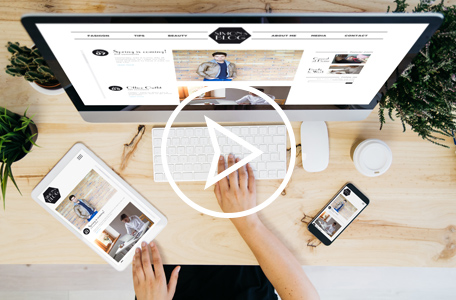Do you remember what going on vacation used to be like fifteen years ago? You had to take your telephone, your camera, your heavy laptop, your tourist guides and roadmaps, a CD player and some CDs, a game console, a selection of books and magazine. Tremendous time and effort were put into the process of gathering all gear needed for a successful trip. Let's also not forget how heavy the luggage would get with so many various items packed. Then along came the smartphone and suddenly all of that could be slipped into your pocket. What convenience and efficiency
This same principle can be applied to organizations using software. Whereas in the past organizations used to have separate processes - often manual - through organizations, now there is no further need to manage, pay for, or maintain multiple software programs. This advancement is especially notable in the Accounts Payable (AP) process, where the ability to improve accounts payable efficiency through the use of Purchase-to-Pay or Procure-to-Pay (P2P) automation provides convenience and efficiency throughout the entire invoice workflow.
All-In-One Solution with P2P
Ready to combine all of your things into one piece of luggage? Thanks to P2P automation invoicing solutions, the time has come when we can say goodbye to the disparate tools commonly used throughout the P2P process. Tools such as specific accounting software, messaging tools, and even scanners can all be found in one program for your business. One single P2P system, modern and practical, that makes it possible to replace scattered, manual tools and create a single P2P automation process that is integrated end-to-end.
But how does this process work?
The Purchase-to-Pay Process
The pivotal part of this P2P process is the digitization of the invoice, essentially linking the order to the payment. Thanks to the use of automated data recognition, it is possible to extract key data from invoices such as supplier identity, references, amounts, etc. Taking this a step further, cloud-based software such as Yooz then triple-checks the data, comparing various sources to ensure that everything is the same. With this automated data recognition, your company's accounting team can spend less time on manual tasks in the process such as tedious data entry or data correction, allowing them to work more efficiently and lowering overall costs.
In addition to invoices, it can also capture appended documents such as contracts or specifications to be enclosed with the record, meaning the capabilities continue to improve efficiency outside of invoices. All documentation is then securely stored and indexed so that they can easily be found and accessed by authorized parties anytime during the process with just a few keystrokes
At the same time, the invoices thus captured are entered into the books and recorded in real-time a management tool or Enterprise Resource Planning (ERP) system. Finally, payment is triggered on a set due date, completing the workflow with a streamlined and timely process
Benefits to Implementing P2P Automation
As illustrated above, there are countless advantages to P2P automation software implementation. By removing discontinuities in the process, one eliminates tedious double entries and the risks of error that they cause. Staff no longer needs to master a plethora of tools, and all concerns about whether such tools are compatible with one another are taken away with one streamlined process
As a result of P2P automation, you also see gains in:
- Productivity
- Safety
- Compliance
- Visibility
- Traceability
- Lower cost
As for the purchasing managers, they are constantly kept informed about the invoice progress, receiving overall performance indicator and real-time alerts. In particular, they are notified and can therefore identify at a glance issues such as outstanding and augmented invoices, duplicates, invoices that are past due, etc.
How Does P2P Automation Communicate?
The types of notifications described above are a key advantage of implementing a P2P automation process. From the very start of the procurement process all the way through the end, it is possible to create customized rules that modify the invoice workflow for your organization's specific needs. For example, certain types of invoices can be grouped, specific vendors can be routed to a dedicated person, approval routing based on amounts can be set, and much more. As soon as one step ends, the next one is launched; the appropriate documents are created and, if human intervention is required at any point of the process, the relevant individuals are notified resulting in more accurate payments and less error. Even better, these rules can be modified at any time, adjusting for changes in personnel or unexpected absences. These are the very type of adjustments that take an average process to good and even superb; one that provides the information necessary to make the right strategic decisions.
P2P automation results in very significant performance gains which allow finance departments to focus on higher value-added tasks and services rather than tiny but time-consuming ones.
Want more information? Reach out to us today to schedule a call with one of our AP automation experts today!
FAQs
What benefits does P2P automation offer over traditional manual processes?
How does Yooz handle the integration of P2P automation with existing ERP systems?
Can Yooz P2P automation accommodate the specific workflows and approval hierarchies of our organization?
How does Yooz ensure data security and compliance in its P2P automation solution?




